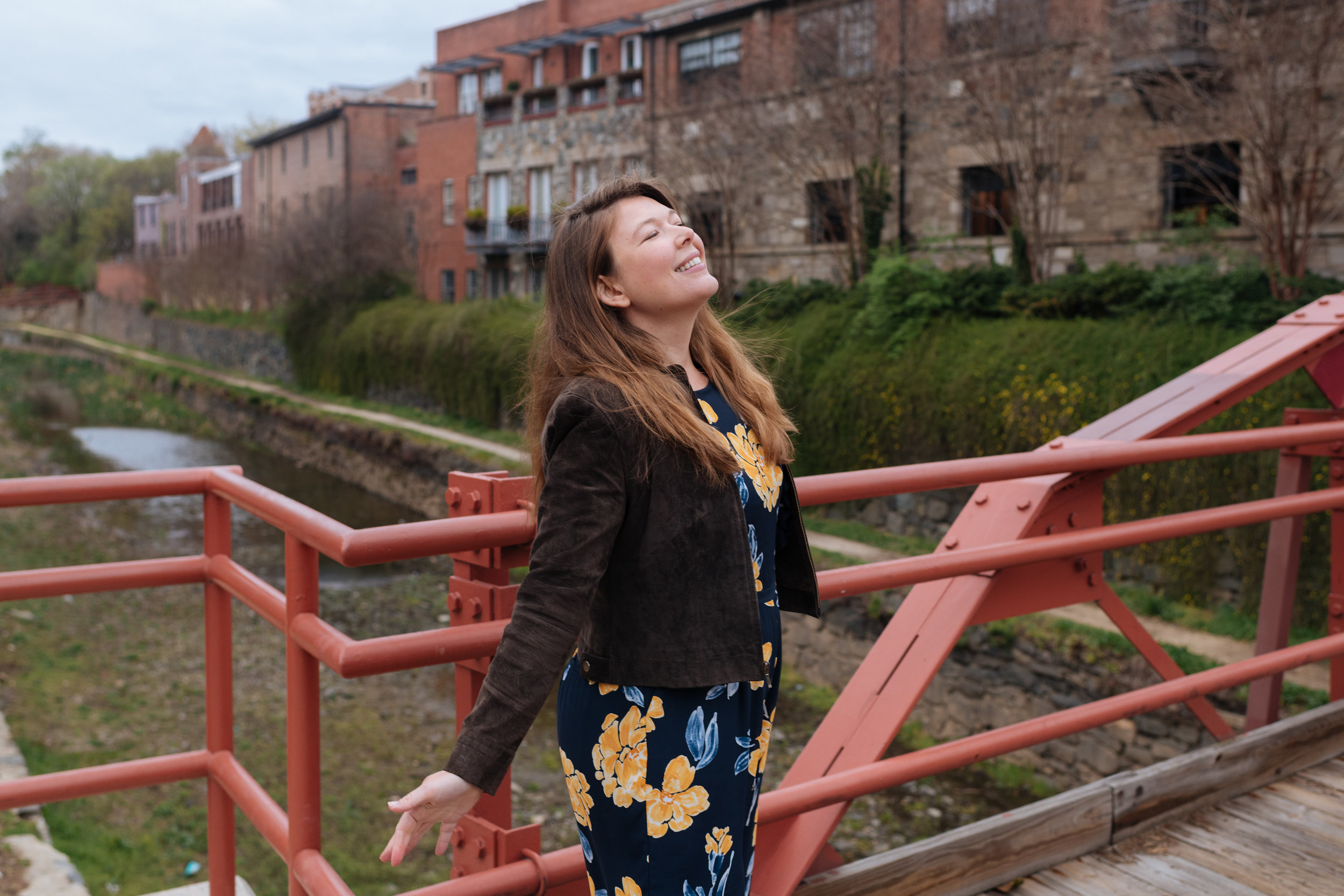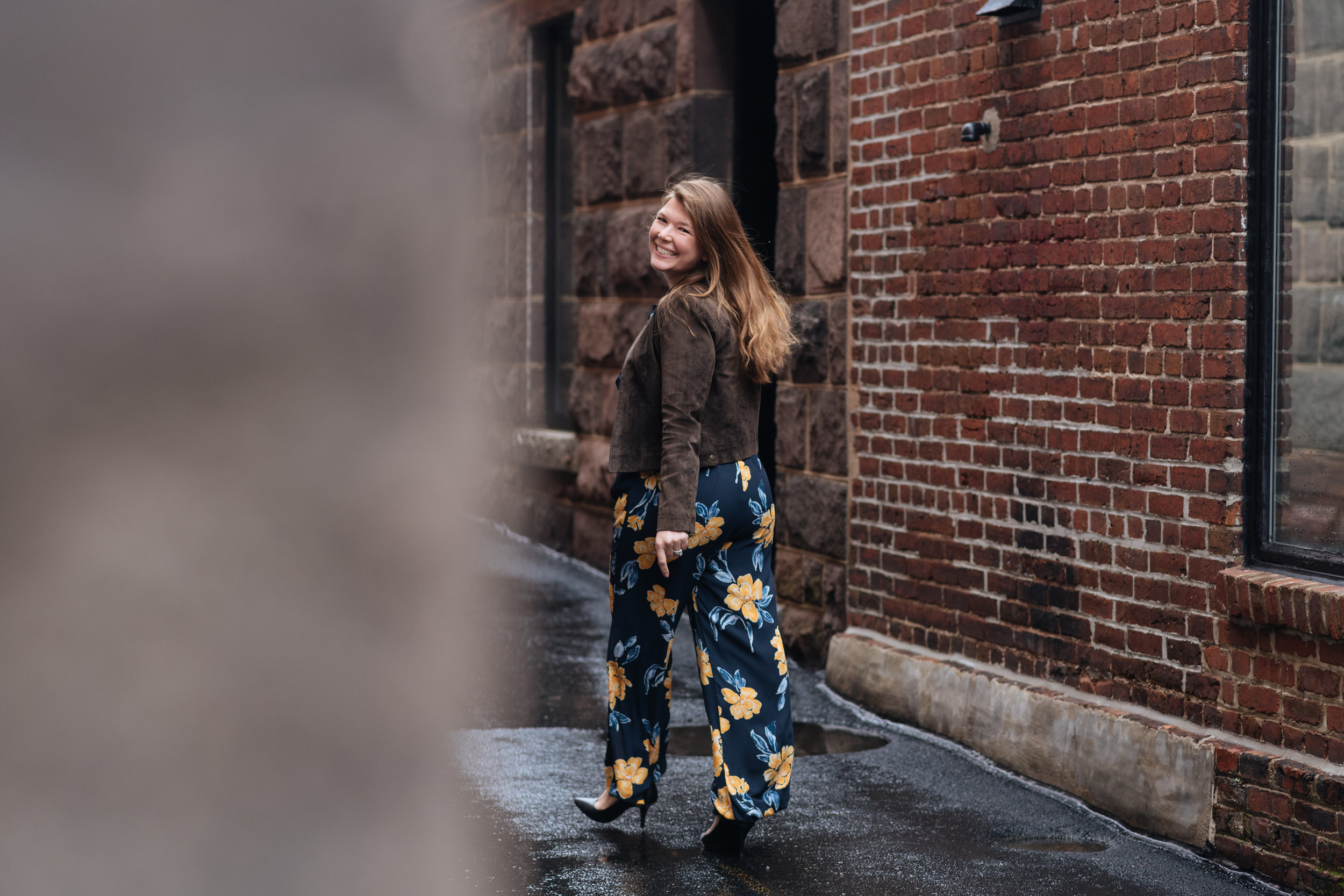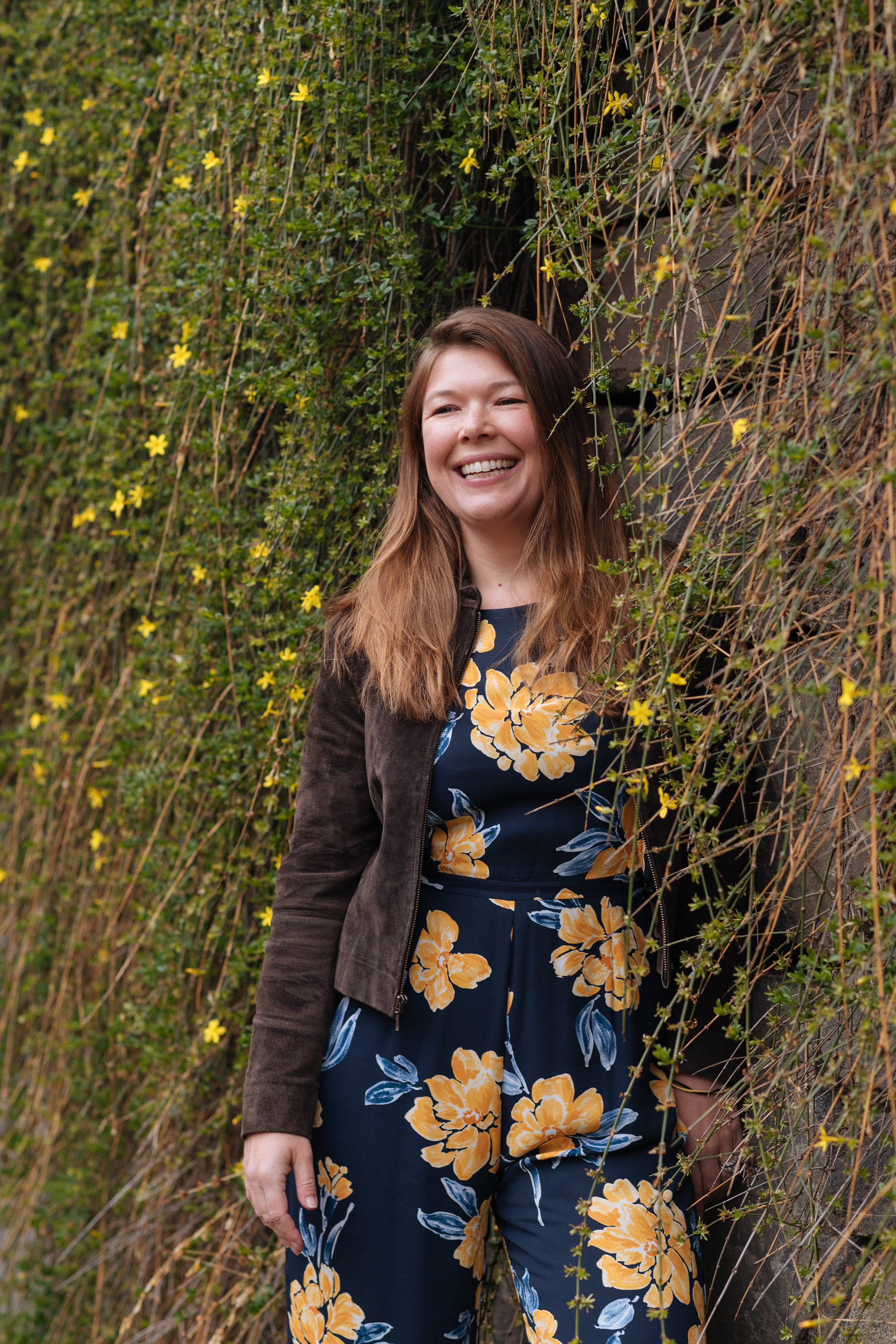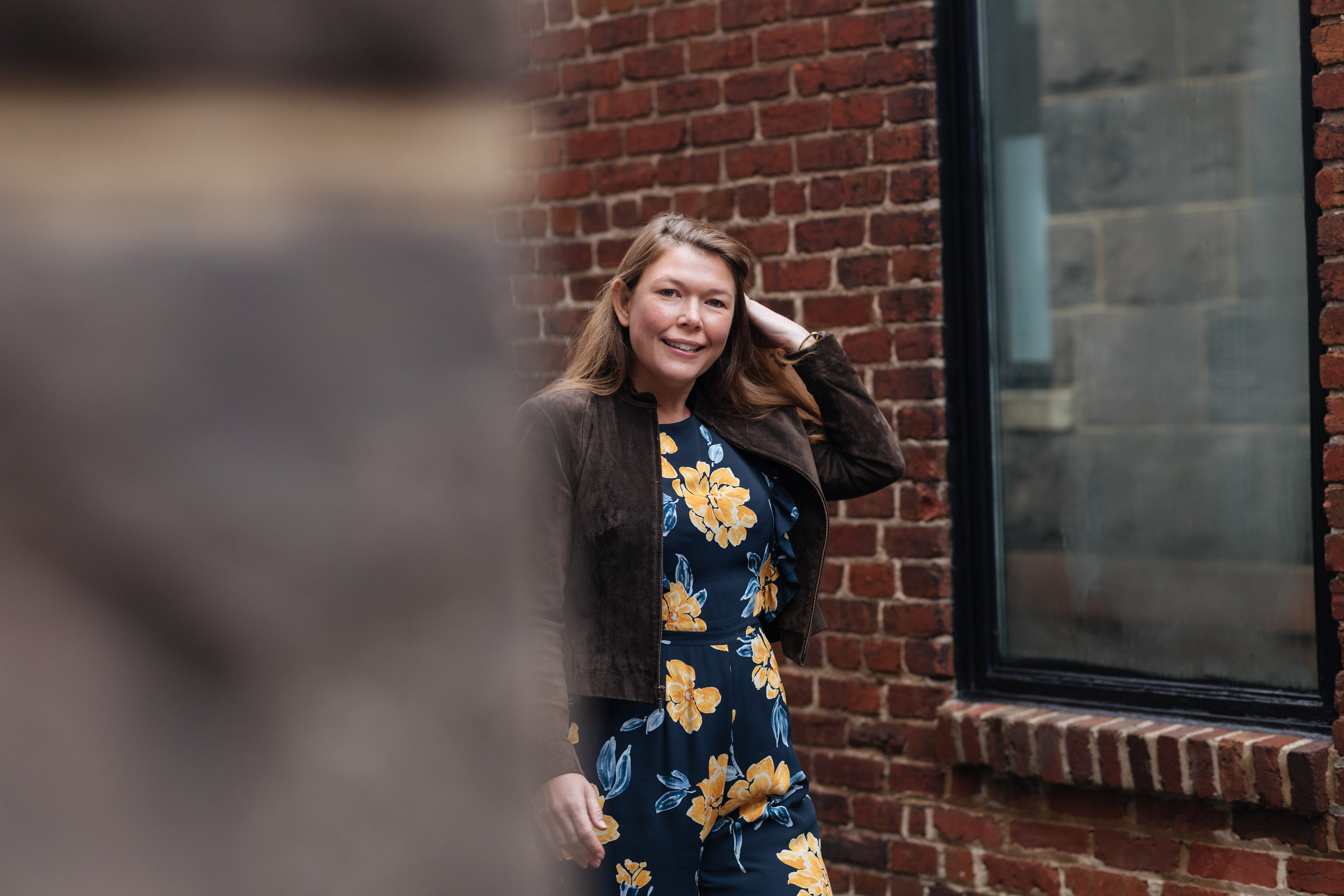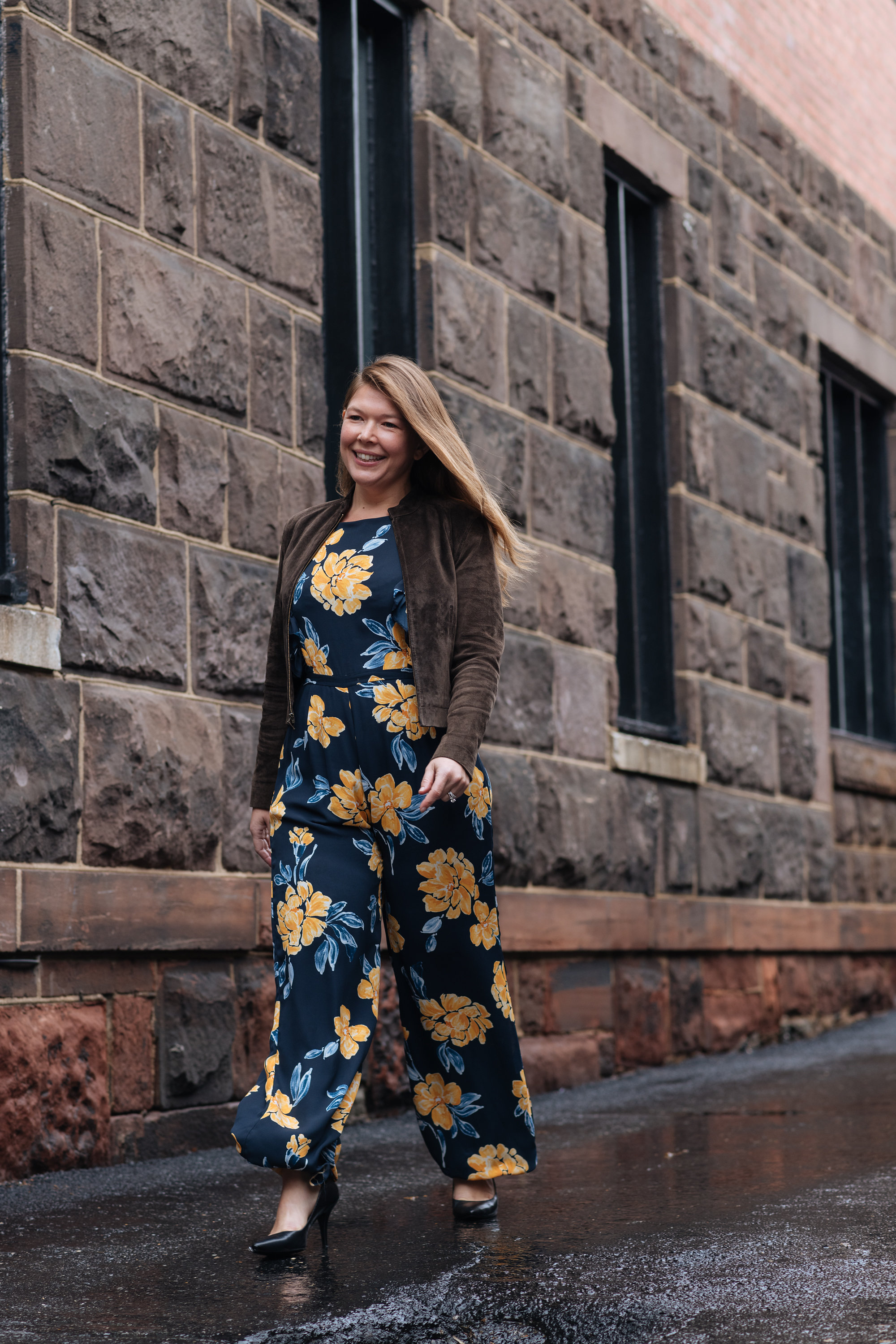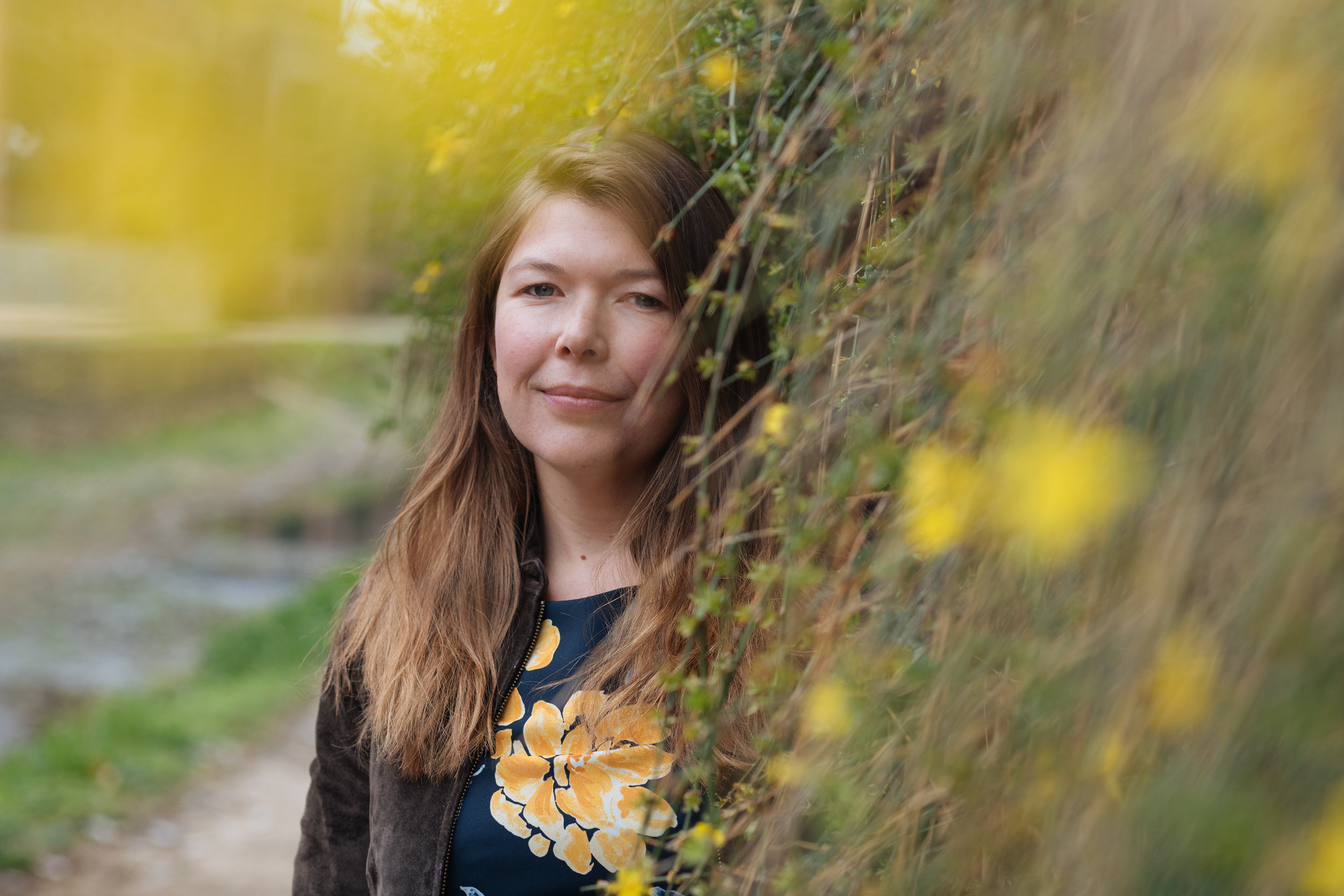‘I Love Hearing What People Are Seeing or Feeling in the Art’
‘The worst class ever.’ That was Deirdre Ehlen MacWilliams’ introduction to art history.
Her mother, a fashion history professor at Nassau Community College on Long Island, insisted Deirdre take college classes during her summer breaks in high school—pushing art history, in particular.
Deirdre wasn’t a fan, but took a similar course by chance during her second semester at GW. Taste—in art, as in life—evolves.
‘I always loved history, and with this class we were tracking what was going on in the world at any given time, but through art. I really liked that perspective of seeing how artists were expressing what they were seeing and feeling.’
Deirdre majored in art history, and moved to New York City after graduation to pursue a Master’s degree in arts administration from the Fashion Institute of Technology. She worked for several galleries in the city, as well as an art consultant.
‘I had always been intrigued by public art. I saw a job posting in DC working for a public artist, so I gave it a go. I paid rent on my apartment for three months because I wasn’t sure if it was going to work out, and I packed like two bags and took the Chinatown bus to DC.’
The rest, as they say, is (art) history.
After a year working in an artist’s studio, Deirdre accepted a position as a project manager for the DC Arts and Humanities and began doing curatorial work. Her big break came in 2014, when she curated the 2014 Foggy Bottom Sculpture Biennial.
‘The three organizers wanted to bring sculpture to their historic neighborhood, and they convinced homeowners to give over their property for several months to contemporary sculpture. I knew the area pretty well, and I like to respond to environments and surroundings, and to be a little bit site responsive in terms of the art and thinking about where artists can fill the gap.’
Thanks to her work in Foggy Bottom and as a producer for two iterations of the 5x5 Project, Deirdre was recommended to the Georgetown BID, who was producing its inaugural Georgetown GLOW light art festival in 2014. Five years later, Deirdre remains its curator.
‘Georgetown is so different from any other place in the region. It is classically cool and there’s already so much—from the canal to the cobblestones and beautiful houses—the art doesn’t have to work that hard.’
The majority of Georgetown GLOW’s light art installations are interactive—encouraging visitors to get up close and personal with the works, all of which are juxtaposed against Georgetown’s historic environs. Although Deidre says it’s impossible to select pieces with universal appeal, she revels in mixed reviews.
‘You’re always surprised by what people like and don’t like, which is the fun part about curating in the public realm. You’re not going to please everyone, and when you do, that’s not good. You’re not challenging anyone or getting anyone to thinking differently about something. I love hearing different perspectives of what people are seeing or feeling in the art, or how they feel like they can engage in it—either by walking through it, feeling like they have to take a step back, or even touching it.’
GLOW presents a unique challenge for Deirdre, who must select pieces that are durable enough to withstand a month of unpredictable weather, potential vandalism, and visitor wear and tear.
‘Public art is very different from art in a museum, where you’re working in a box with walls. You want to make sure the artists you’re working with have a full understanding of these conditions. As GLOW gets bigger and better each year, we need pieces that are big and splashy, but also interactive. And budget comes into play. These are all the things I’m balancing when I’m looking for artists.’
In addition to her year-round work with Georgetown GLOW, Deirdre is a public art project manager for Arlington Public Art and most recently curated a project called ‘Put the ‘I’ in Civic’ by area artist Linda Hesh. The artwork spells out the word, but the first ‘i’ is missing.
‘People can stand in there and become that ‘i’. The piece started in Courthouse, at the center of Arlington County Government, and I love that any kind of person can tell them what civic means to them. I think that’s what’s so wonderful about public art—when you have these kinds of intentional participations, you can elicit information from people.’
At home, Deirdre’s personal art collection elicits its own reactions from her husband—a fellow college rugby player whom she met at a sports bar when they were 18. Now parents to a toddler, Deirdre says they rarely go out anymore—affording her a slightly bigger budget to spend on a few pieces of local art each year.
‘I have a very feminine aesthetic, and oddly sometimes buy things with animals in it. I bought this one print with a whale that’s caught in nets and things. Another is an abstract walrus that’s chained up. It’s in our guest bathroom and it gives my husband nightmares. Who knows what was going through the artist’s mind, but it’s interesting because I’m not disturbed by the piece, but my husband is definitely tapping into something subliminal.’
Taste, Deirdre reiterates, is a universal matter of dispute. That’s kind of the point.
‘Art stretches your mind in a different way. It has that power to make you think about things from a different perspective.’
